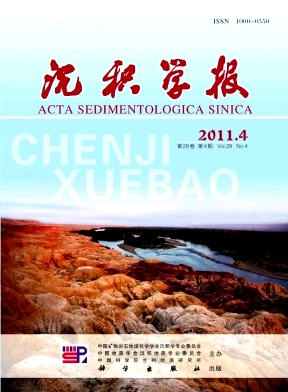Discussion on Forming Mechanism and Evolution of the Central Guizhou Palaeouplift
- Received Date: 1900-01-01
- Rev Recd Date: 1900-01-01
- Publish Date: 2011-08-10
-
Key words:
- Central Guizhou Palaeouplift
Abstract: Mesoproterozoic folded basement was unexposed in central Guizhou province. The thickness and facies of the regional Neoproterozoic sedimentary cover and stratigraphic contact relationship reveal that the Central Guizhou palaeouplift was on the high position of the folded basement before Nanhuaian. South and north margins were still receiving deposits within relative low position of the basement. Neoproterozoic rifting history and geophysical proof also indicate that the basement might have some differences between the palaeouplift area and the marginal area. Thus, we could speculate that there has Mesoproterozoic folded basement under the sedimentary cover in correspondence with Sibao Group. Central Guizhou palaeouplift was lying on the high position of the folded basement. Compressive stress of southnorth direction of the folded basement determines the palaeouplift's distribution in the eastwest direction after uplifted above the seawater level. During the period of Sinian and Cambrian, the folded basement of the palaeouplift was under the sedimentary strata. The strata in this area are continuous deposits with a relatively stable structure. Honghuayuan Formation's offlap and Meitan Formation's overlap shows that the folded basement and sedimentary strata above were uplifted and became a palaeouplift at the beginning of Ordovician. Periphery area, however, was still receiving deposits. The palaeouplift's obvious uplift by the influence of Duyun Movement between the Ordovician and Silurian had made the periphery area exposure, resulting in karst and offlapoverlap of the strata. Within the process of uplift, the sedimentary system of the south and north margins was separated with certain degrees. In MidLate Silurian, the last episode of Caledonian Movement occurred strongly. During this movement period, seawater regressed from the Middle and Upper Yangtze block, and the Central Guizhou Palaeouplift became one part of the land. Duyun Movement had great impact on this palaeouplift, but the effect of basement forms and structural trend was its forming mechanism.
| Citation: | LIU Wei. Discussion on Forming Mechanism and Evolution of the Central Guizhou Palaeouplift[J]. Acta Sedimentologica Sinica, 2011, 29(4): 658-664. |






 DownLoad:
DownLoad: